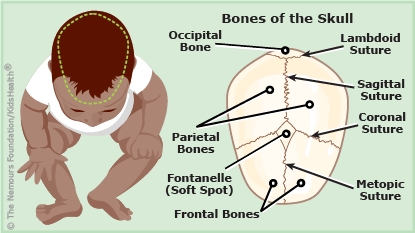Your child had surgery called cranial vault reconstruction for craniosynostosis (kray-nee-oh-sin-oss-TOE-sis). Craniosynostosis is when one or more of the sutures (fibrous joints that hold the skull bones together) harden into bone too soon.


Follow the surgeon's recommendations for:
Some general information:

Your child:

Your child:

What causes craniosynostosis? It's not always clear why a child has craniosynostosis. When only one suture closes early, it usually just happens by chance. If more than one suture closes early or if the child has other birth differences (such as heart problems or fingers or toes that look different), the craniosynostosis might be due to a genetic disorder.
Why is surgery (cranial vault reconstruction) done for craniosynostosis? Craniosynostosis can change the shape of the head and face. If this isn't corrected with surgery, these changes can be permanent. Also, without surgery, craniosynostosis can lead to increased pressure inside the skull. This happens when the skull can't get big enough to fit the growing brain. Increased pressure inside the skull can cause developmental problems, headaches, brain damage, seizures, or blindness. Surgery helps make room for the growing brain.